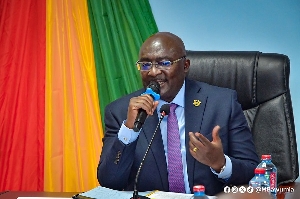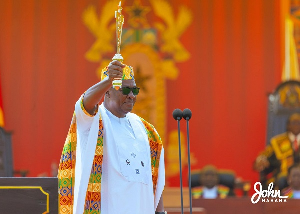In a quest to increase the country’s energy needs, efforts are in place to promote the development and transmission of renewable energy to the national grid to sustain electricity distribution in the country.
Already, The Vice president of Ghana, Dr. Mahamudu Bawumia has promised to add 2000 megawatts to the national grid to extend it to approximately 7,000 megawatts annually
Vice President, Dr. Mahamudu Bawumia disclosed that the next New Patriotic Party (NPP) government would add at least 2,000 megawatts of solar power to Ghana’s energy mix in the next four years.
According to him, businesses in Ghana are increasingly uncompetitive due to the high cost of electricity which he said depends largely on forex rates and the cost of petroleum on the international market.
Dr. Bawumia said the exposure of Ghana’s energy mix to world crude prices and foreign exchange fluctuations increases the cost of living for the average Ghanaian and renders businesses uncompetitive.
He said he envisions vigorously pursuing solar power in the next four years to help alleviate the harsh fuel prices levied on Ghanaians and businesses.
“To reduce the cost of living is to look at our power generation. Ghana currently relies a lot on oil and gas to generate power and if you look at their [oil and gas] costs, they are quite high so anytime the prices move up in the Middle East, fuel, electricity, and transport prices also move up and so I want us to move away from oil and gas to solar power. It is the key for us in the generation of electricity.
“My goal and the goal that I have stated is that in the next four years, Ghana should add 2,000 megawatts of solar power to the generation of power and that is more than half of our consumption of electricity and so combine that with Akosombo and you would nearly reduce the cost of power by nearly 50 per cent and that will give our businesses a competitive advantage.”
According to Ghana’s Energy Commission and the International Trade Administration of the United States Department of Commerce, the total installed capacity for existing plants in Ghana is 5,134 Megawatt (MW), with a dependable capacity of 4,710 MW. Thermal generation accounts for the largest share of Ghana’s power generation, representing 66 percent, with hydro accounting for 33 percent. Ghana’s thermal power generation is fueled largely by natural gas, but occasionally using light crude oil and diesel. Ghana exports power to Togo, Benin, and Burkina Faso.
The Government of Ghana remains heavily involved in the energy sector, with state entities having a controlling presence in the entire value chain. In the generation phase, the entire hydroelectricity component is controlled by the Volta River Authority (VRA) and Bui Power Authority (BPA), with VRA also involved in some aspects of thermal generation along with Independent Power Producers (IPP).
State-owned Ghana Grid Company (GRIDCO) is still solely responsible for transmission throughout the entire country. The final leg, distribution, is mainly controlled by the state-owned entities Electricity Company of Ghana (ECG) and Northern Electricity Distribution Company (NEDCO). A private entity, Enclave Power Company, plays a minor role in the distribution chain.
The electricity access rate stands at 86.63 percent (2021), with 50 percent of rural residents and 91 percent of urban residents connected to the electricity grid. Ghana’s energy sector has significant debt because of years of accumulated financial shortfalls from power pricing that does not recover full cost, although consumers consider tariffs as relatively high.
Long delays in payments are a significant concern in the sector as the government pays for the subsidy from the national budget. Debt within the energy sector, coupled with the high cost of power in Ghana, creates a brake on Ghana’s economic development.
Renewable Energy (RE) Subsector
Renewable energy sources are projected to generate an estimated 152 gigawatt hours (GWh) of electrical energy at present. The renewable energy sources include grid-connected solar RE farm at Bui, the embedded BXC and Meinergy solar plants and VRA’s facilities at Navrongo and Lawra/Kaleo. Further, in April 2023, Ghana lifted its moratorium on the issuance of wholesale electricity supply licenses for renewable energy embedded generation projects, a temporary suspension it had instituted in 2020.
Industry players can now apply for licenses to develop renewable energy generation projects for private and own useGhana published a Renewable Energy Master Plan in 2019 with the aim of achieving the following by 2030:
In 2022, renewable energy accounted for 31.6 percent of the electricity capacity in Ghana, keeping stable from the previous year. Within the period observed, the share generally decreased, registering a peak in 2015 at 57.1 percent. As of 2022, the total renewable energy capacity in Ghana amounted to 1,700 megawatts.
Opinions of Tuesday, 18 June 2024
Columnist: Kwabena Adu Koranteng















